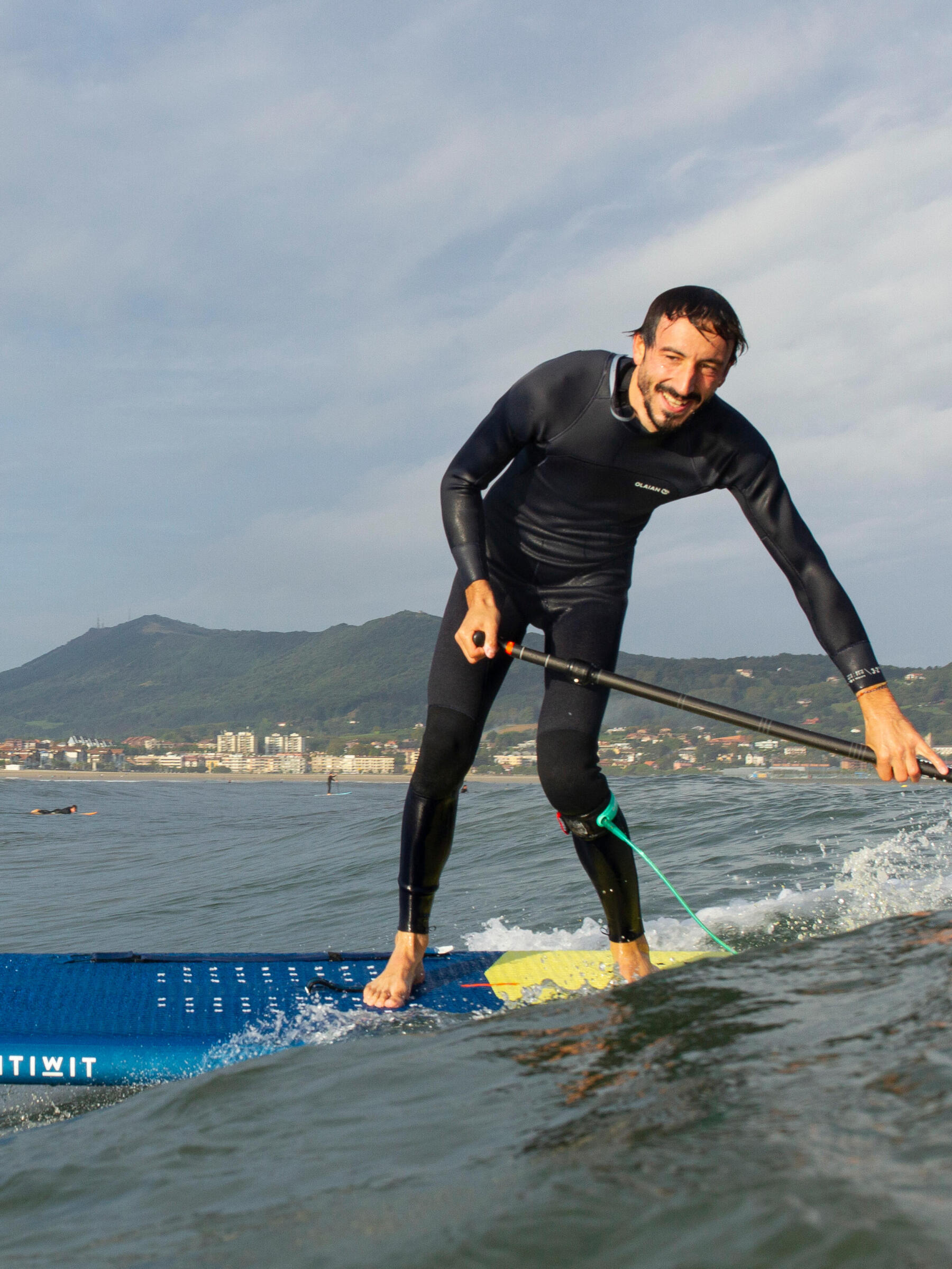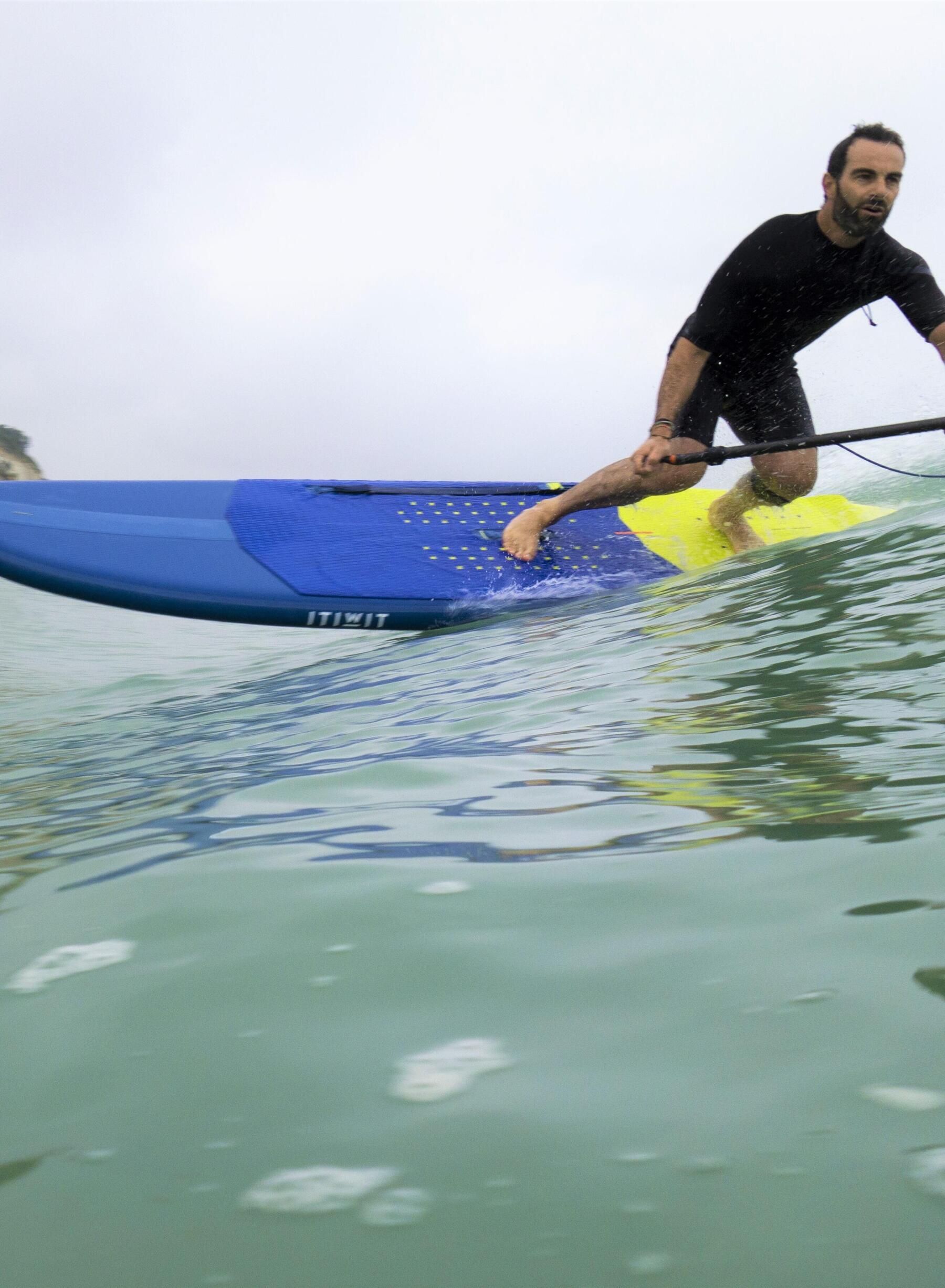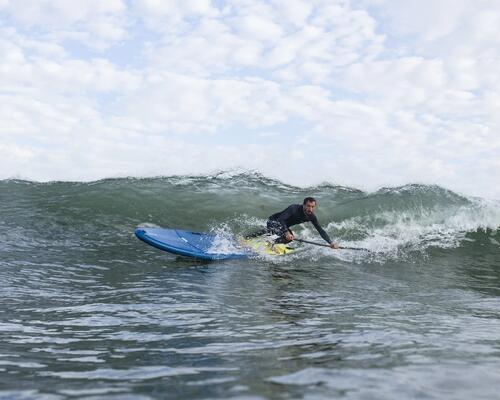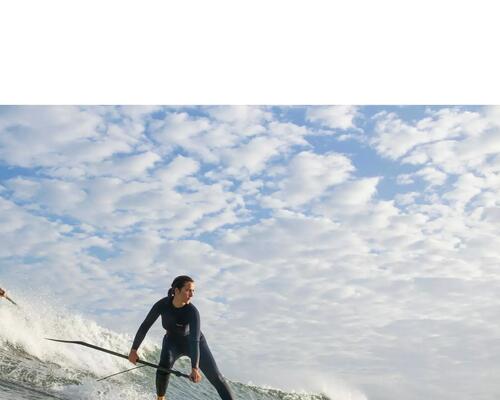Which paddle and which size to use for surfing
To get started in SUP surfing, you can use your touring paddle.
If you want to specialise and use a SUP surfing board, you will need a sturdy paddle to withstand the aggressive strokes needed for take-off.To launch the board in the slope of the wave, you will need to paddle very fast, or the wave will pass underneath the board and continue without you.To be effective, you need to make as many paddle strokes in as little time as possible. Finally, the blade of the paddle must not be too wide, to protect your shoulders during this very intense take-off.
As for your paddle size, you should adjust it (exactly to your height) to be shorter than when you are touring. You must only use the paddle to propel yourself for a few seconds during take-off. After this, it will be used for ever tighter manoeuvres on the wave (roller). This is why it needs to be as compact as possible during the whole movement sequence on the wave.
Remember that this new adjustment will greatly modify your paddling position. You will need to lean forward much more during take-off, so that the blade penetrates the water properly.It will take a little while to get used to.
If you can adjust the height of your paddle, make the most of this to try out different lengths. You’ll see that it can be useful to use the touring length (around 15 cm more than your height), to move through broken waves with enough power, then to shorten it when you’re positioned for take-off.







